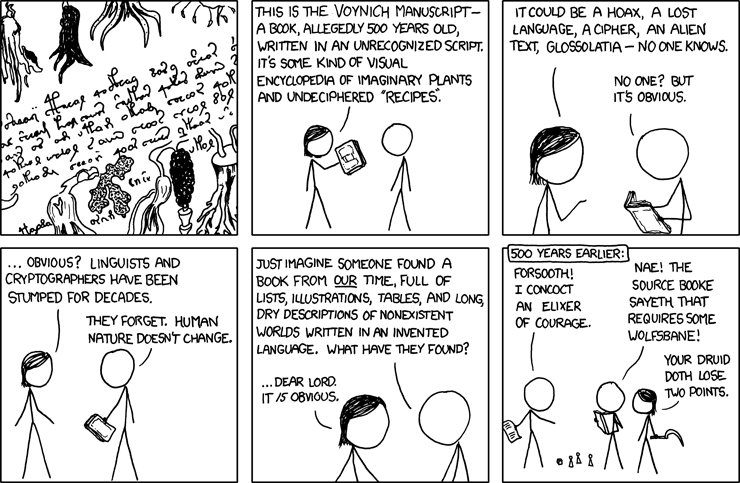I don't know if been discussed on the BBS before, and I don't know if this is the exact place for it, but as a place of technical and logical discussion, thought I'd give it a whirl here.
The Voynich Mnuscript is one of the enduring mysteries of our times. Hoax? Cypher? Glossolalia? No one really knows.
From Wikipedia:
Now, I'm very skeptical of UFOs, bigfoot and other cryptozoology, John Titor, and so on. Nonetheless, I believe this manuscript to be the only existing piece of evidence for the existence of parallel universes, that somehow this book has ended up here from... somewhere else. An alternate Earth, with different peoples, languages, even plants. Which then begs the question, how did it end up here?
It's waaaaayy too complex to be just a nonsense hoax, the time component alone is huge, and the skillset would have to have been exceptional in the day. Which is one reason why some theorists suggest John Dee or people like him.
Of course, I admit that theory is completely out there, and I'm fine with that. But as the other theories seem to lead to dead ends, I offer it up. At worst, this could be an interesting discussion about an intriguing document.
The Voynich Mnuscript is one of the enduring mysteries of our times. Hoax? Cypher? Glossolalia? No one really knows.
From Wikipedia:
http://en.wikipedia.org/wiki/Voynich_manuscriptThe Voynich manuscript is a handwritten book thought to have been written in the 15th or 16th century and comprising about 240 vellum pages,[notes 1] most with illustrations. The author, script, and language remain unknown: for these reasons it has been described as "the world's most mysterious manuscript".[1]
Generally presumed to be some kind of ciphertext, the Voynich manuscript has been studied by many professional and amateur cryptographers, including American and British codebreakers from both World War I and World War II. Yet it has defied all decipherment attempts, becoming a historical cryptology cause célèbre. The mystery surrounding it has excited the popular imagination, making the manuscript a subject of both fanciful theories and novels: numerous possible authors have been suggested for it.
Now, I'm very skeptical of UFOs, bigfoot and other cryptozoology, John Titor, and so on. Nonetheless, I believe this manuscript to be the only existing piece of evidence for the existence of parallel universes, that somehow this book has ended up here from... somewhere else. An alternate Earth, with different peoples, languages, even plants. Which then begs the question, how did it end up here?
It's waaaaayy too complex to be just a nonsense hoax, the time component alone is huge, and the skillset would have to have been exceptional in the day. Which is one reason why some theorists suggest John Dee or people like him.
Of course, I admit that theory is completely out there, and I'm fine with that. But as the other theories seem to lead to dead ends, I offer it up. At worst, this could be an interesting discussion about an intriguing document.
Last edited by a moderator:

 Having said that, keep in mind we consider parallel universes a distinct probability. Or are they really just thought exercises for scientists with too much time on their hands?
Having said that, keep in mind we consider parallel universes a distinct probability. Or are they really just thought exercises for scientists with too much time on their hands?